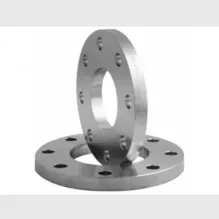-
Cangzhou Yulong Steel Co., Ltd.
-
Phone:
+86 13303177267 -
Email:
admin@ylsteelfittings.com
- English
- Arabic
- Italian
- Spanish
- Portuguese
- German
- kazakh
- Persian
- Greek
- French
- Russian
- Polish
- Thai
- Indonesian
- Vietnamese
- Zulu
- Korean
- Uzbek
- Hindi
- Serbian
- Malay
- Ukrainian
- Gujarati
- Haitian Creole
- hausa
- hawaiian
- Hebrew
- Miao
- Hungarian
- Icelandic
- igbo
- irish
- Japanese
- Javanese
- Kannada
- Khmer
- Rwandese
- Afrikaans
- Albanian
- Amharic
- Armenian
- Azerbaijani
- Basque
- Belarusian
- Bengali
- Bosnian
- Bulgarian
- Catalan
- Cebuano
- China
- China (Taiwan)
- Corsican
- Croatian
- Czech
- Danish
- Esperanto
- Estonian
- Finnish
- Frisian
- Galician
- Georgian
- Kurdish
- Kyrgyz
- Lao
- Latin
- Latvian
- Lithuanian
- Luxembourgish
- Macedonian
- Malgashi
- Malayalam
- Maltese
- Maori
- Marathi
- Mongolian
- Myanmar
- Nepali
- Norwegian
- Norwegian
- Occitan
- Pashto
- Dutch
- Punjabi
- Romanian
- Samoan
- Scottish Gaelic
- Sesotho
- Shona
- Sindhi
- Sinhala
- Slovak
- Slovenian
- Somali
- Sundanese
- Swahili
- Swedish
- Tagalog
- Tajik
- Tamil
- Tatar
- Telugu
- Turkish
- Turkmen
- Urdu
- Uighur
- Welsh
- Bantu
- Yiddish
- Yoruba

Oct . 11, 2024 03:46 Back to list
flange 30 inch class 150
Understanding Flanges The 30-Inch Class 150 Flange
Flanges are crucial components in piping systems, functioning as connections between two sections of pipe or between a pipe and various equipment. They provide a means to seal the connection securely while allowing for easy disassembly and maintenance. Among the many types of flanges available, the 30-inch Class 150 flange is often utilized in a variety of industrial applications due to its specific design and pressure rating.
What is a Flange?
Flanges are flat, disc-like structures that are typically circular, allowing for a secure fit around the edges of a pipe or equipment. They come in various sizes, pressure ratings, and materials, making them versatile for many industries, including oil and gas, chemical processing, and water treatment. The standard classifications help engineers and installers choose the right flange for their specific needs.
The Significance of Size and Class
The 30-inch designation refers to the nominal diameter of the flange. This measurement is critical as it determines the compatibility of the flange with pipes of the same diameter. The Class 150, on the other hand, reflects the flange's pressure rating, indicating its maximum pressure capability at a given temperature. Specifically, a Class 150 flange can typically handle pressures up to 150 psi (pounds per square inch) at ambient temperatures.
Material Considerations
Flanges can be made from various materials, including carbon steel, stainless steel, and plastic, depending on the application. Carbon steel flanges are common in low to medium pressure applications due to their strength and cost-effectiveness. Stainless steel flanges are often used in corrosive environments as they offer superior resistance to oxidation and corrosion. The choice of material significantly impacts the durability, safety, and performance of the flange.
flange 30 inch class 150

Design Standards
Flanges must adhere to certain design standards, which ensure interoperability and safety within piping systems. The American National Standards Institute (ANSI) and the American Society of Mechanical Engineers (ASME) provide specifications that guide the design and manufacturing of flanges. For instance, the ANSI B16.5 standard is widely recognized for dimensions, tolerances, and requirements pertinent to flanges, including Class 150 flanges.
Installation and Maintenance
When installing a 30-inch Class 150 flange, several factors must be accounted for. Proper alignment and the use of gaskets are essential to create a tight seal and prevent leaks. Gaskets serve as a barrier between the flange faces and help alleviate imperfections that may lead to leaks. Tightening the bolts to the appropriate torque specification is crucial, as overtightening can lead to flange warping, while insufficient tightening can result in leaks.
Routine maintenance and inspection of flanges are also important for longevity and safety. Inspecting for signs of corrosion, rust, or physical damage can help in identifying potential issues before they escalate into major problems. Regularly checking the bolts for tension and ensuring they remain secure is also advisable.
Conclusion
The 30-inch Class 150 flange is a vital component in many piping systems, allowing for the reliable and safe transport of fluids. By adhering to design standards and selecting the appropriate materials, industries can ensure optimal performance and longevity of their piping systems. Understanding the specifications and proper maintenance of flanges is crucial for engineers and technicians, ensuring the integrity of industrial operations. With the right knowledge and practices, the use of flanges can lead to efficient and safe management of piping infrastructures.
Latest news
-
ANSI 150P SS304 SO FLANGE
NewsFeb.14,2025
-
ASTM A333GR6 STEEL PIPE
NewsJan.20,2025
-
ANSI B16.5 WELDING NECK FLANGE
NewsJan.15,2026
-
ANSI B16.5 SLIP-ON FLANGE
NewsApr.19,2024
-
SABS 1123 FLANGE
NewsJan.15,2025
-
DIN86044 PLATE FLANGE
NewsApr.19,2024
-
DIN2527 BLIND FLANGE
NewsApr.12,2024
-
JIS B2311 Butt-Welding Fittings LR/SR 45°/90° /180°Seamless/Weld
NewsApr.23,2024











